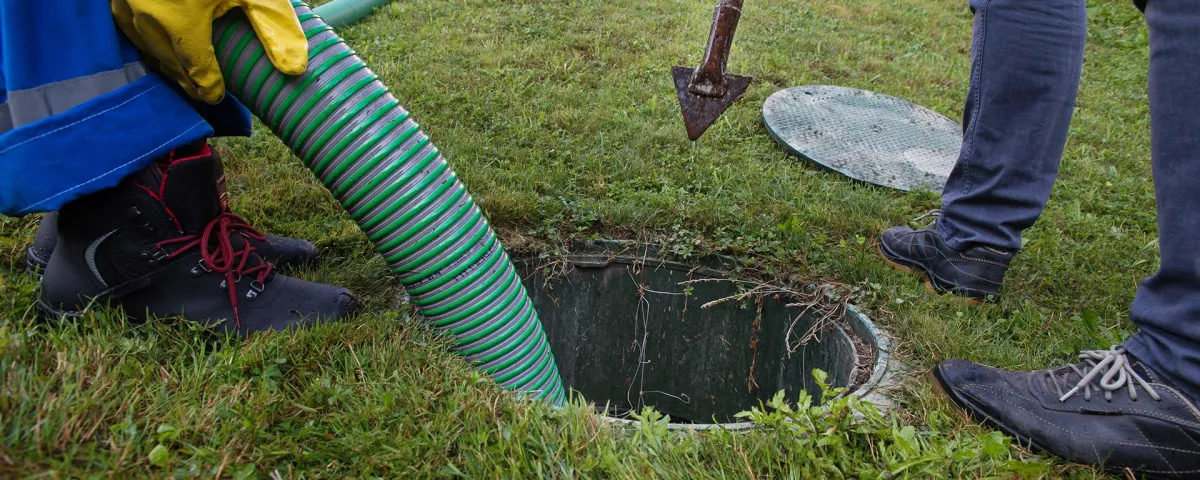How to Pump Out a Septic Tank Yourself: A Complete DIY Guide

Have you ever walked into your backyard and noticed that unmistakable septic smell? Or maybe you've seen water pooling around your drain field?
If you're wondering how to pump out a septic tank yourself, you're not alone. Many homeowners face this challenge, and while it's a big task, we're here to guide you through every step of the process.
Understanding Your Septic System
Before jumping into solutions, let's make sure you know what you're dealing with.
A drain field (also called a leach field) is where your septic tank sends wastewater to be naturally filtered through the soil. When it gets clogged, you've got trouble.
Signs Your Drain Field Needs Cleaning
Slow draining sinks and toilets
Sewage odors in your yard
Soggy spots over the drain field
Gurgling sounds in your plumbing
Sewage backup in your home
Choosing the Best Drain Field Cleaner
Step 1: Identify Your Specific Problem
Check which issue you're facing:
Biomat buildup (slimy layer blocking soil)
Grease and soap accumulation
Root intrusion
General system overload
Step 2: Select the Right Type of Cleaner
Biological Cleaners:
Use beneficial bacteria
Break down organic waste naturally
Safe for the environment
Take time to work (weeks to months)
Chemical Cleaners:
Work faster (days to weeks)
More aggressive on clogs
Can harm beneficial bacteria
Use only as directed
Mechanical Cleaning:
Professional jetting service
Immediate results
Most expensive option
Best for severe blockages
How to Use Biological Drain Field Cleaners
Step 1: Calculate Your Tank Size
Find your septic tank size in your home records. Most homes have 1,000-1,500 gallon tanks.
Step 2: Choose a Quality Product
Look for cleaners with:
Multiple strains of bacteria
High bacteria count (billions per dose)
EPA approval for septic use
Good customer reviews
Step 3: Apply the Initial Shock Treatment
Pour the recommended shock dose into your toilet
Flush once to send it into the system
Avoid using water for 6-8 hours
Repeat weekly for the first month
Step 4: Maintain Regular Treatment
Add maintenance doses monthly. Mark your calendar so you don't forget.
Using Chemical Cleaners Safely
Warning: Chemical cleaners should be your last resort before calling professionals.
Step 1: Read All Safety Instructions
Wear gloves and eye protection. Keep windows open for ventilation.
Step 2: Choose the Right Chemical
Sulfuric acid products for organic clogs
Hydrogen peroxide formulas for biomat
Copper sulfate for root problems
Step 3: Apply According to Directions
Pour the exact amount specified
Never mix different chemicals
Flush with the recommended water amount
Stay out of the area for specified time
Cat litter
Diapers
Feminine products
Paper towels
Medications
Professional Drain Field Cleaning Methods
Sometimes you need to call in the experts. Here's what they'll do:
Hydro Jetting
Uses high-pressure water
Clears pipes and distribution lines
Costs $300-600 typically
Aeration Treatment
Adds oxygen to rejuvenate bacteria
Helps break down biomat
Requires special equipment
Terra-Lift Process
Injects air into drain field soil
Creates new drainage channels
Can extend field life significantly
Preventing Future Drain Field Problems
Step 1: Pump Your Tank Regularly
Schedule pumping every 3-5 years. According to the EPA, this is essential maintenance.
Step 2: Watch What Goes Down
Never flush:
Grease or cooking oil
Non-biodegradable items
Harsh chemicals
Excessive water
Step 3: Protect Your Drain Field
Don't park vehicles on it
Keep trees 30 feet away
Direct roof runoff elsewhere
Avoid compacting the soil
Natural Alternatives to Commercial Cleaners
Want to try homemade solutions first? Here are safe options:
Yeast Treatment
Mix 1/2 cup active dry yeast with warm water
Pour into toilet when foamy
Flush once
Repeat monthly
Rotten Tomato Method
Put 3-4 rotten tomatoes in toilet
Flush down
Natural bacteria help break down waste
Use every few months
When to Call a Professional
Know when it's time to stop DIY efforts:
Sewage backing up into home
Multiple drain field areas failing
No improvement after 2 months of treatment
Local health department notices
Maintaining Your Septic System Health
Daily Habits That Help
Spread laundry throughout the week
Fix leaky faucets promptly
Use water-efficient fixtures
Run full dishwasher loads only
Monthly Maintenance Tasks
Check for unusual odors outside
Monitor water drainage speed
Add biological treatment
Inspect the drain field area
Annual Check-ups
Have a professional inspect your system yearly. They'll catch problems early.
Cost Comparison of Treatment Options
Understanding costs helps you budget wisely:
Biological cleaners: $20-50 per month
Chemical treatments: $100-300 per application
Professional cleaning: $300-800
Drain field replacement: $3,000-15,000
Common Mistakes to Avoid
We see these errors too often:
Overloading the system with too much water
Using harsh chemicals that kill good bacteria
Ignoring early warning signs
Planting trees near the drain field
Driving vehicles over the field
Your Action Plan for Success
Now you have all the tools to tackle your drain field problems effectively. Whether you choose biological treatments, careful chemical use, or professional help, you're equipped to make the right decision.
Remember, a healthy septic system protects your home value and your family's health. Taking action now with the best drain field cleaner saves you thousands in repairs later.
Start with the simplest solutions first, be patient with biological treatments, and don't hesitate to call professionals when needed. Your septic system will thank you, and you'll enjoy peace of mind knowing you've chosen the best drain field cleaner approach for your situation.

© 2025 | All Rights Reserved | Privacy Policy
